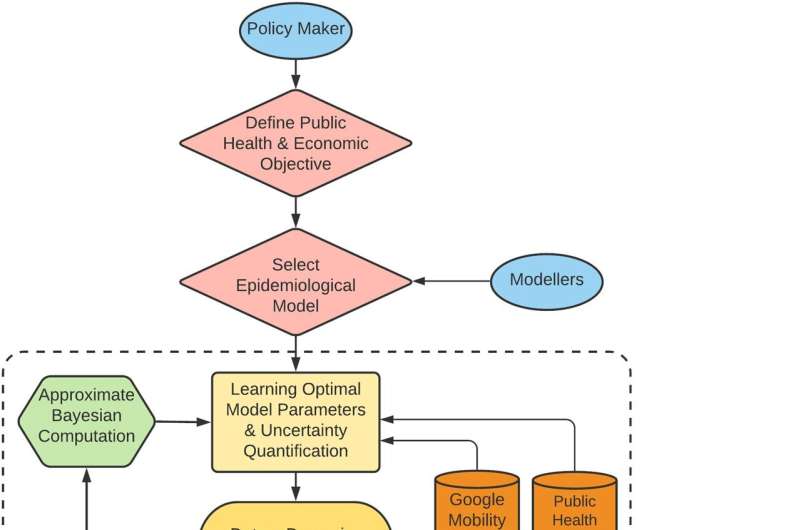A mobility-based approach to optimize pandemic lockdown strategies

A new strategy for modeling the spread of COVID-19 incorporates smartphone-captured data on people's movements and shows promise for aiding development of optimal lockdown policies. Ritabrata Dutta of Warwick University, U.K., and colleagues present these findings in the open-access journal PLOS Computational Biology.
Evidence shows that lockdowns are effective in mitigating the spread of COVID-19. However, they do come at a high economic cost, and in practice, not everybody follows government guidance on lockdowns. Thus, Dutta and colleagues propose, an optimal lockdown strategy would balance between controlling the ongoing COVID-19 pandemic and minimizing the economic costs of lockdowns.
To help guide such a strategy, the researchers developed new mathematical models that simulate the spread of COVID-19. The models focus on England and France and—using a statistical approach known as approximate Bayesian computation—they incorporate both public health data and data on changes in people's movements, as captured by Google via Android devices; this mobility data serves as a measure of the effectiveness of lockdown policies.
Then, the researchers demonstrated how their models could be applied to design optimal lockdown strategies for England and France using a mathematical technique called optimal control. They showed that it is possible to design effective lockdown protocols that allow partial reopening of workplaces and schools, while taking into account both public health costs and economic costs. The models can be updated in real time, and they can be adapted to any country for which reliable public health and Google mobility data are available.
"Our work opens the door to a larger integration between epidemiological models and real-world data to, through the use of supercomputers, determine best public policies to mitigate the effects of a pandemic," Dutta says. "In a not-so-distant future, policy makers may be able to express certain prioritization criteria, and a computational engine, with an extensive use of different datasets, could determine the best course of action."
Next, the researchers plan to refine their country-wide models to work at smaller scales; specifically, each of the 348 local district authorities of the U.K.
The researchers add, "The integration of big data, epidemiological models and supercomputers can help us design an optimal lockdown strategy in real time, while balancing both public health and economic costs."
More information: Dutta R, Gomes SN, Kalise D, Pacchiardi L (2021) Using mobility data in the design of optimal lockdown strategies for the COVID-19 pandemic. PLoS Comput Biol 17(8): e1009236. doi.org/10.1371/journal.pcbi.1009236


















